Mt. Fuji Trivia
- Home
- Mt. Fuji Trivia Get to know about the opening and closing period of Mt. Fuji. Clothing and equipment
Learn about the opening period and required gear!
Mt. Fuji’s climbing season and
clothing & equipment
Did you know? Opening and closing time of Mt. Fuji.
Mt. Fuji is Japan’s highest mountain and known all over the world for its beauty! In 2013 it became a World Heritage Site.
Though its altitude of 3,776m is quite high, but even beginners can reach the summit if they gather enough information and prepare for the ascent. However, it is dangerous to take the mountain climbing too lightly! With hypothermia and altitude sickness there are some unique problems to Mt. Fuji the climbers must tackle.
As basic information for beginners, here is some advice on the climbing season of Mt. Fuji and the clothing and equipment required for the climbing!
(Navigator: Imafuji Grandpa)
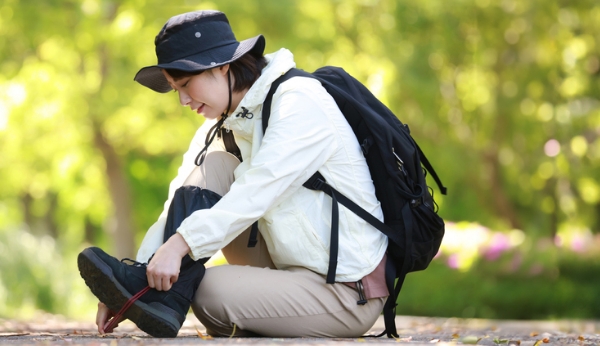
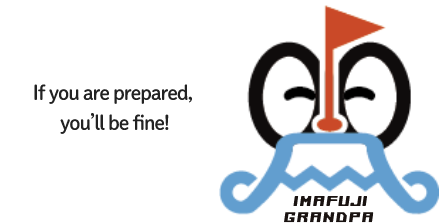
Climbing Season
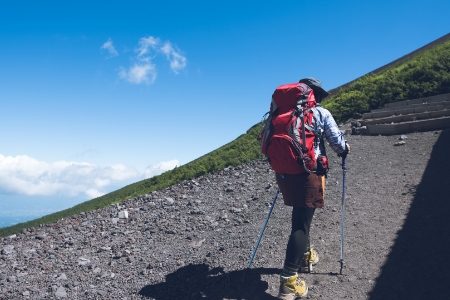
Mt. Fuji’s climbing season starts from early July and goes on until beginning of September.
The opening in July may be delayed due to the condition of the trails, such as remaining snow. Also, the opening and closing period vary depending on the climbing route, so it is necessary to check the opening status of each route you want to use for ascending and descending the mountain.
If a trail is closed all routes on this trail are inaccessible.
In particular, during the snowy season, the weather condition can be severe, which can lead to falls and accidents, making the climb extremely dangerous!
*Link: Ministry of the Environment Mount Fuji Official Site
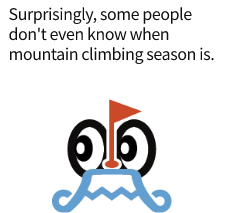
Clothing and equipment
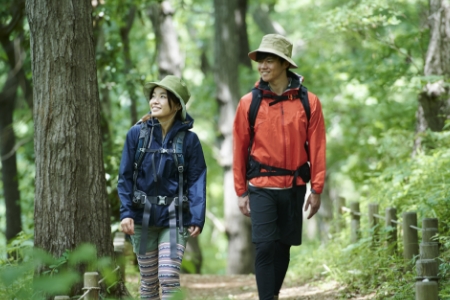
The temperature at the summit is 25°C lower than on the ground. It’s as cold as midwinter.
Please refer to the following for clothing and equipment when preparing.
Especially for first timers it’s a lot to prepare, so it may be convenient to rent equipment. Make a reservation in advance online.

Wear
-
Spats (gaiters)
Necessity: ★★★
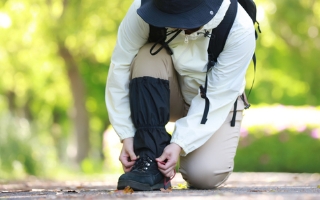
Prevents mud and sand from getting into the shoes and socks. Essential for running on large sand courses.
-
Hiking boots
Necessity: ★★★

High cut shoes that cover the legs. Waterproof is required. Sandals and geta are not allowed.
-
Backpack cover
Necessity: ★
Prevents the luggage from getting wet.
-
Backpack
Necessity: ★★★
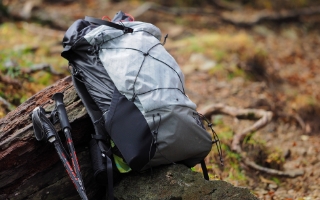
The size should be 30 liters, or more if necessary. Carrying it by hand or one-shoulder is not recommended.
-
Hiking sticks
Necessity: ★★
Reduces strain on the feet.
Even better if you buy two. -
Gloves
Necessity: ★★★
Work gloves are also OK.
They will protect your hands from the cold, sunlight, and injuries if you fall. -
Rainwear
Necessity: ★★★
Can also be used as cold weather gear.
Top and bottom are separate.
Umbrellas are not allowed. -
Bottoms
Necessity: ★★★
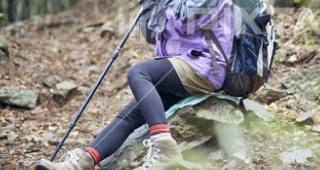
Easy to move in, sweat-absorbent, quick-drying.
The mountain girl style of layering high-performance tights with short pants or skirts is popular.
Jeans are a no go as they will get wet from rain and sweat. -
High performance tights
Necessity: ★★
Some performance tights use taping technology and graduated compression to compensate for muscle deficiencies.
-
Knitted Hat or beanie
Necessity: ★★
Protection against the cold at higher altitudes.
-
Hat
Necessity: ★★★
To prevent sunburn and heat strokes a wide-brimmed hat is recommended.
-
Spare clothes
Necessity: ★★★
1 or 2 sets to change into in case of rain or getting wet from sweat.
-
Down jacket
Necessity: ★★
For protection from the cold. It's best to have one that can be compactly packed in a backpack. Use it as a blanket when sleeping in a mountain hut.
-
Fleece
Necessity: ★★★
Good for regulation temperature.
-
Long sleeve shirt
Necessity: ★★★
Light wool or quick-drying material. Light fleece is also OK.
-
T-shirt and innerwear
Necessity: ★★★
Synthetic, quick-drying material; cotton is not allowed. Some clothing has UV protection and deodorizing properties.
Equipment
-
First aid kit
Necessity: ★
in case of injury or illness
-
Trash bag
Necessity: ★★★

There are no trash cans on Mt. Fuji. To preserve its beauty for future generations and protect the environment, don’t leave anything on the mountain. By reducing packaging you can also prepare in beforehand.
-
Cash
Necessity: ★★★
Although electronic payments are becoming more common, cash is still necessary. It is a good idea to have around 15,000 yen on hand. It is best to have a lot of 100-yen coins (20-30 coins).
[Costs]
-Mt. Fuji Conservation Donation: 1,000 yen
-Mountain hut accommodation: 8,000-9,000 yen
-Paid toilets: 1,200-1,500 yen (200-300 yen per use)
-Bottled drinks: 500-1,000 yen (400-500 yen per bottle)
*Additional expenses such as food, souvenirs, offerings, branding, etc., if necessary. -
Insurance card
Necessity: ★
Necessary in case of injury or illness.
-
Oxygen supply
Necessity: ★
To counter altitude sickness.
-
Medicine against altitude sickness
Necessity: ★★★
It is said that about 50% of people who go to the summit will develop altitude sickness. Headache medicine, etc.
-
Portable heat packs
Necessity: ★
To keep you warm.
-
Watch
Necessity: ★
A mobile phone also does the job.
-
Hiking Map
Necessity: ★★
To avoid making a wrong turn or getting lost.
-
Mobile radio
Necessity: ★
With AM reception, you can detect approaching thunder by the noise!
-
Spare charger or power bank
Necessity: ★★★
There are areas where the signal is weak, and in order to receive weak signals, more power is consumed than on the ground.
-
Mobile phone
Necessity: ★★★
Mobile phone base stations are set up during mountain opening hours,so mobile phones will be available on the mountain trails.
Important for communication in emergencies. -
Toothpaste sheet
Necessity: ★★★
Brushing your teeth is difficult on Mt. Fuji.
It's best to clean your teeth with a toothpaste sheet when sleeping in the mountain hut. -
Wet Towel (Wet Tissue)
Necessity: ★★★
Water is very precious on Mount Fuji. There are no baths, let alone water to wash your face. Water is useful for drying your hands and body.
-
Towel
Necessity: ★★
Use it to protect from the sun, as a mask, or as a pillow cover when taking a nap.
-
Lip cream
Necessity: ★★
Prevents lips from drying out. Also available with UV-protection.
-
Sun protection
Necessity: ★★★
The UV rays are very strong. Even if you apply it once, it will wash off with sweat, so be sure to reapply it frequently.
-
Helmet
Necessity: ★★
It is recommended that you carry a helmet and dust mask in case of an eruption or falling rocks.
-
Head lamp
Necessity: ★★★
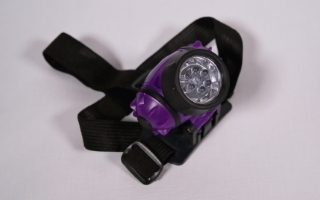
It keeps your hands free. Essential for climbing in the dark before the sunrise or to use in the hut after lights out.
-
Mask (Bandana)
Necessity: ★★
Use it to protect yourself from dust when sleeping in a mountain hut.
-
Snacks for the move, emergency food
Necessity: ★★★
Active food: Eat quickly during the climb to supplement sugar and salt deficiencies. Nuts, chocolate, dried fruit, etc. Amino acids and citric acid.
-
Lunchbox and food for stay
Necessity: ★★★
Lunch and dinner on the day of the climb. Breakfast and lunch the next day. You can also eat in the mountain hut.
-
Water (Waterback, PET bottle)
Necessity: ★★★
Around 2-3L are needed for the climb with one overnight stay. Start with 1L and then buy more in the huts along the trail to save on weight. It is dangerous to not drink water because you are worried about toilets. If you become dehydrated, you are more likely to get altitude sickness.
References
- Mt. Fuji Official Site (Ministry of the Environment)
- World Heritage Mt. Fuji Complete Guide (Shizuoka Prefecture)
- Safety Guide 2023 – How to Use the Mt. Fuji Weather Station – Guide (Certified NPO Mt. Fuji Weather Station Utilization Association)
- Mt. Fuji Perfect Guide (ISBN978-4-533-13277-3)



